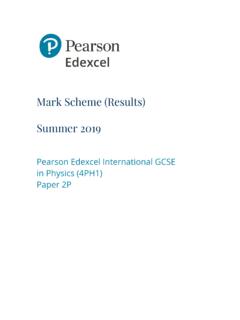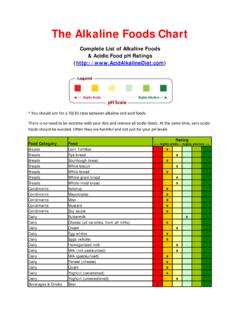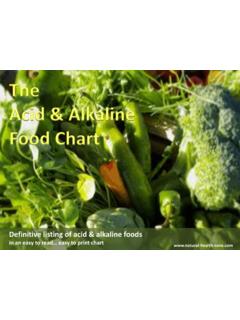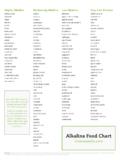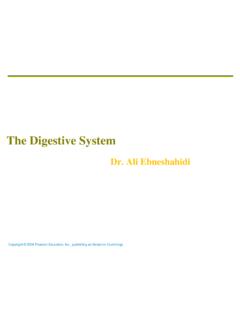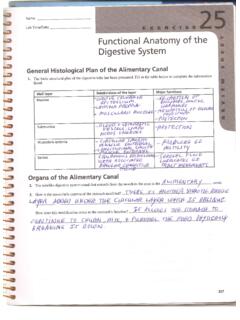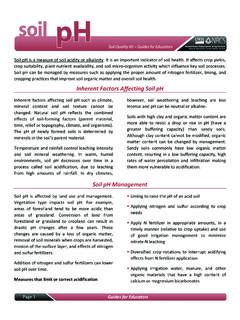Transcription of The Periodic Table: Chemical Periodicity
1 Save My Exams! The Home of Revision For more awesome GCSE and A level resources, visit us at The Periodic Table: Chemical Periodicity Question Paper 1. Level International A Level Subject Chemistry Exam Board CIE. Topic The Periodic Table: Chemical Periodicity Sub-Topic Paper Type Theory Booklet Question Paper 1. Time Allowed: 71 minutes Score: /59. Percentage: /100. Grade Boundaries: A* A B C D E U. >85% 70% 45% <45%. Save My Exams! The Home of Revision For more awesome GCSE and A level resources, visit us at 1 (a) A sample of lead consists of the following isotopes in the percentage abundances stated. isotope % abundance 204. Pb 206. Pb 207. Pb 208. Pb Use these data to calculate the relative atomic mass of the sample of lead to two decimal places. (b) Tin and lead both form oxides in oxidation states (II) and (IV). Ar (Pb) = .. [2]. (i) How does the acid-base nature of tin(II) oxide compare to that of tin(IV) oxide?
2 [1]. (ii) Illustrate your answer to (i) with equations, showing the reaction of each oxide with a suitable acid or base, as appropriate. SnO .. SnO2 .. [2]. (iii) Describe the reactions, if any, that occur when separate samples of tin(IV) oxide and lead(IV) oxide are heated in air. Include any relevant observations and write equations for any reactions that occur.. [3]. [Total: 8]. Save My Exams! The Home of Revision For more awesome GCSE and A level resources, visit us at 2 The elements in Period 3 of the Periodic Table show variations in their behaviour across the period. (a) The bar chart below shows the variation of melting points of the elements across Period 3. 1800. 1600. 1400. 1200. melting 1000. point / K 800. 600. 400. 200. 0. Na Mg Al Si P S Cl Ar In each of the following parts of this question you should clearly identify the interactions involved and, where appropriate, explain their relative magnitudes.
3 (i) Explain the general increase in melting point from Na to Al.. [3]. (ii) Explain the variation of melting points from P to Ar.. [3]. (iii) Explain why Si has a much higher melting point than any of the other elements in the period.. [1]. Save My Exams! The Home of Revision For more awesome GCSE and A level resources, visit us at (b) The graph below shows the variation of the first ionisation energies across Period 3. 1600. 1400. 1200. 1000. first ionisation 800. energy / kJ mol 1. 600. 400. 200. 0. Na Mg Al Si P S Cl Ar (i) Explain why the first ionisation energy of Ar is greater than that of Cl.. [1]. (ii) Explain why the first ionisation energy of Al is less than that of Mg.. [1]. (iii) Explain why the first ionisation energy of S is less than that of P.. [1]. [Total: 10]. Save My Exams! The Home of Revision For more awesome GCSE and A level resources, visit us at 3 (a) The melting points of some Group IV elements are given below.
4 Element melting point / K. C 3925. Si 1683. Ge 1210. Sn 505. Suggest an explanation for each of the following. (i) The melting point of silicon is less than that of carbon.. (ii) The melting point of tin is less than that of germanium.. [2]. (b) Using data from the Data Booklet where appropriate, write equations for the following reactions of compounds of Group IV elements. (i) SiCl 4(l) + H2O(l).. (ii) the action of heat on PbCl 4(l).. (iii) SnCl 2(aq) + FeCl 3(aq).. (iv) SnO2(s) + NaOH(aq).. [4]. [Total: 6]. Save My Exams! The Home of Revision For more awesome GCSE and A level resources, visit us at 4 (a) The electrical conductivities of some Group IV elements are given below. electrical element conductivity / 1 cm 1. C (graphite) 102. Si 10 6. Ge 10 2. Sn 104. From a consideration of the structures, suggest reasons for the following. (i) The electrical conductivity of silicon is less than that of graphite.. (ii) The electrical conductivity of tin is more than that of germanium.
5 [2]. (b) Using data from the Data Booklet where appropriate, write equations for the following reactions of compounds of Group IV elements. (i) the action of heat on PbO2(s).. (ii) PbO2(s) + HCl (aq).. (iii) SnO(s) + NaOH(aq).. (iv) GeCl 4(l) + H2O(l).. [4]. [Total: 6]. Save My Exams! The Home of Revision For more awesome GCSE and A level resources, visit us at 5 Oxides are compounds which usually contain oxygen combined with one other element. Oxides are classified as follows. acidic alkaline amphoteric basic (a) Using these terms only, complete the table to describe the oxides of the elements of the third period of the Periodic Table sodium to sulfur. Na2O MgO Al 2O3 SiO2 P4O10 SO2 Cl 2O7. acidic [4]. (b) Give the names of two elements from sodium to chlorine which form more than one oxide.. and .. [1]. (c) Sodium reacts with water. (i) Describe, as fully as you can, what you would see when a piece of sodium is reacted with water.
6 (ii) Write an equation for the reaction of sodium with water.. [4]. Save My Exams! The Home of Revision For more awesome GCSE and A level resources, visit us at (d) Sulfur dioxide is present in small, but significant, amounts in the Earth's atmosphere. (i) State one way by which sulfur dioxide enters the atmosphere.. (ii) Give the formula of another sulfur compound which is formed in the atmosphere from sulfur dioxide.. (iii) What are the environmental consequences of the compound you have identified in (ii)? .. [3]. (e) Sulfur dioxide is used as a food preservative. What property of sulfur dioxide enables it to act in this way? .. [1]. (f) Another sulfur compound which is present in the Earth's atmosphere is carbonyl sulfide, OCS. The sequence of atoms in the molecule is oxygen-carbon-sulfur and the molecule is not cyclic. (i) Draw a dot-and-cross' diagram of the OCS molecule. Show outer electrons only. (ii) Suggest a value for the O C S bond angle.
7 [2]. [Total: 15]. Save My Exams! The Home of Revision For more awesome GCSE and A level resources, visit us at 6 Although the actual size of an atom cannot be measured exactly, it is possible to measure the distance between the nuclei of two atoms. For example, the covalent radius' of the Cl atom is assumed to be half of the distance between the nuclei in a Cl 2 molecule. Similarly, the metallic radius' is half of the distance between two metal atoms in the crystal lattice of a metal. These two types of radius are generally known as atomic radii'. The table below contains the resulting atomic radii for the elements of period three of the Periodic Table, Na to Cl. element Na Mg Al Si P S Cl atomic radius / nm (a). a) Explain qualitatively this variation in atomic radius.. (ii) Suggest why it is not possible to use the same type of measurement for argon, Ar.. [4]. (b). b) Use the Data Booklet to complete the following table of radii of the cations and anions formed by some of the period three elements.
8 Radius of cation / nm radius of anion / nm Na+ Mg2+ Al 3+ P3 S2 Cl . Save My Exams! The Home of Revision For more awesome GCSE and A level resources, visit us at (ii) Explain the differences in size between the cations and the corresponding atoms.. (iii) Explain the differences in size between the anions and the corresponding atoms.. [5]. (c) Each of the elements Na to Cl forms at least one oxide. Na2O is an ionic oxide, SO2 is a covalent oxide. Both oxides react with water. (i) Write an equation for the reaction of each of these oxides with water. Na2O .. SO2 .. (ii) What is the pH of the resulting solution in each case? Na2O .. SO2 .. (iii) Write an equation for the reaction that occurs between the products of your reactions in (i).. [5]. [Total: 14].




